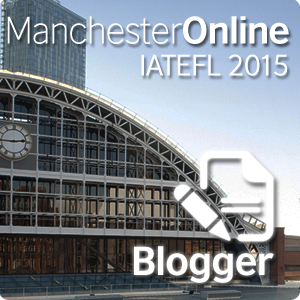A lot of EAP looks like this: E=>AP: we start with’ English’ and assume that the ‘academic’ will follow. Lots of books teach the academic vocabulary and so on, and then assume that the students will have the skills. Let’s reverse the arrow.
The plan of the talk:
1. the university and its practices
2. text & language
3. curriculum | design
4. teacher practice
1. the university and its practices
At the beginning of the talk, Steve Kirk invited the audience to discuss: What is a university for?
- university should be about knowledge building
- however knowledge differs across subjects:
(Jim Martin) the science tradition tries to build ‘the theory of everything’ (a single model for everything in the universe) / in social sciences (linguistics, sociology) there are several ‘conflicting’ theories / humanities (history, literary studies) is focused on dispersed items, e.g. Keat’s poetry - So, science is characterized by empirical and objective, quantitative methods, highly structured genres; humanities: explicitly interpretive, discursive argument, more varied readership, more fluid discourses – e.g. someone recently produced a PhD thesis that has a pull-out section in the form of a comic book!
This inevitably reflects on the academic language used in these disciplines.
2. text & language
So ‘it turns out that engineers show, philosophers argue, biologists find and linguists suggest.’ (Hyland, 2009)
In other words, in academia the context leads to certain language practices and language practices reinforce the context. In terms of EAP, this means that language work can’t be done separately from academic work and and should be part of it.
3. curriculum | design
The process:
- s/s get a reading pack of 4-6 journal articles / book chapters and essay questions (no choice);
content-based lectures related to the reading. - Sullabus organising principles: the syllabus mirrors the academic process (reading > note taking > discussions > writing).
So in class: sessions on dealing with those long readings (at lower levels, as s/s are ~IELTS 5.5-6.0) – understanding paragraph structure, navigating the texts effectively, etc; then on note-taking, etc; taking part in academic discussions; writing, etc. - The language work is integrated into that, emerges from that
4. teacher practice
Redefining EAP as Participation in Academic Practices through English.
A teacher needs to be not just a ‘discourse analyst’ but ‘an ethnographer’ who understands the academic practices and can help the learners see how they inform linguistic choices. Also, seeing the knowledge practices and understanding the (target) academic context allows us to give the students a much more coherent picture of Academic Language.
- How would you respond to this question asked by a student: ‘Can I use ‘I’ or ‘we’ in my writing? I see this in the articles that I read..’
The wrong answer is ‘yes’. The simple correct answer is ‘well, it depends’. To get into the detail, let’s get back to the difference between science (objective) and humanities (interpretive). For science, academic knowledge is valued. In humanities, academic knowers are valued, the particular interpretive gaze. So in scientific writing ‘I’ is less used, unlike in humanities (which is even reflected in referencing conventions).Kirk went on to show a ‘counter example’ to that: an extract from an article on Quantum Physics that uses the expression We demonstrate. But why? Because the authors use it to report their main result. This demonstrates that we can talk of tendencies but not rules. - Passive vs active voice? ‘We conducted research in…’ or ‘Research was conducted..?’ The choice of the passive/active is a reflection of writer perspective informed by their difference – a lot more than a mechanical transformation.
- In science, we use a metaphor: I/We = The Research (Process)
So, we don’t say I aimed/investigated/found/required/conducted – we say the research did.
So a one-sentence summary of this talk would be: Teach the ‘why’ – and ‘why not’.
NB: check out #tleap on twitter and the #tleap Google plus community.





